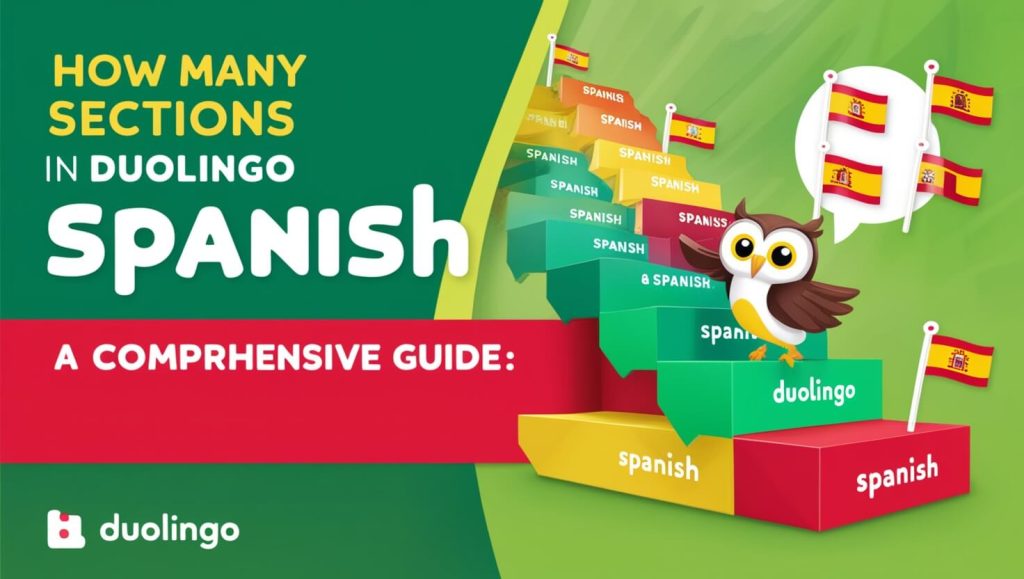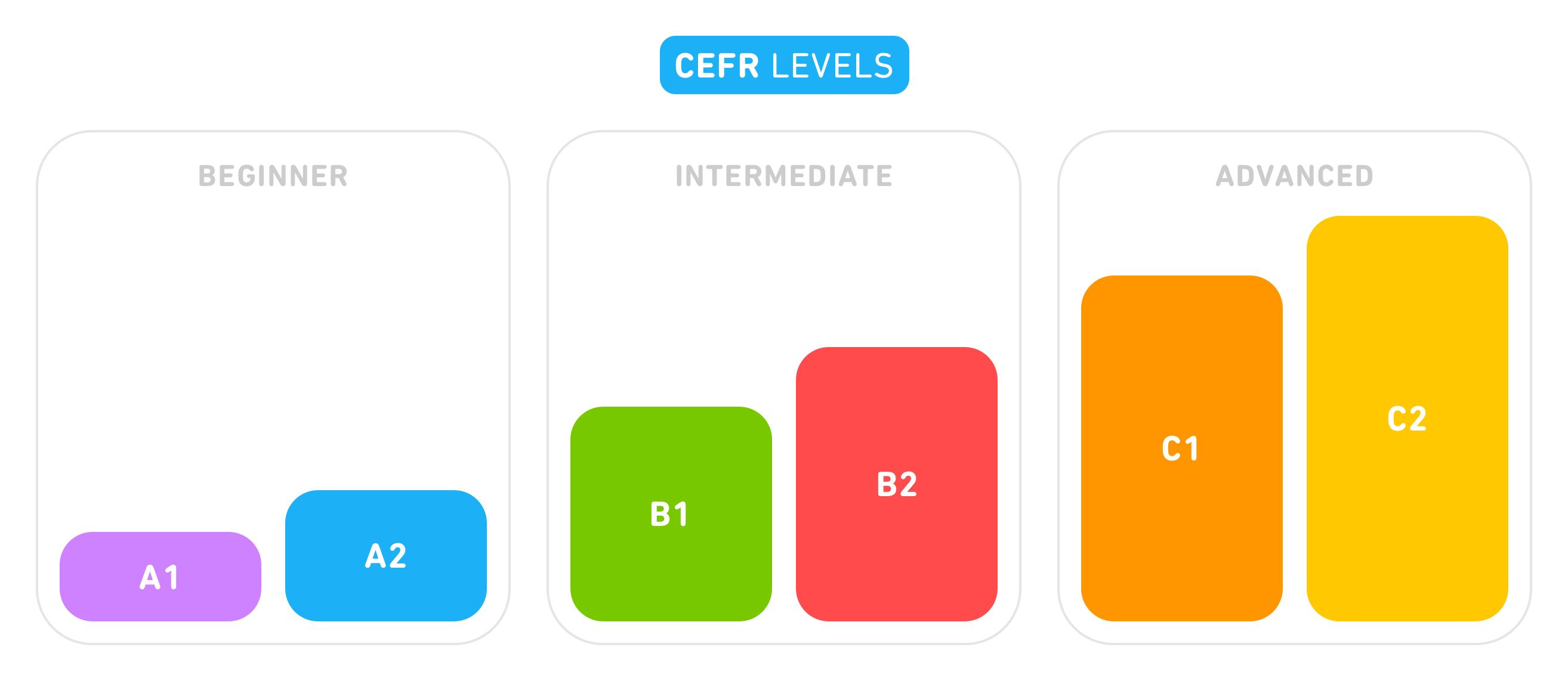How Many Sections in Duolingo Spanish: A Comprehensive Guide

Duolingo has become one of the most popular language-learning platforms, offering structured courses for learners worldwide. For those studying Spanish, understanding the platform's layout is key to maximizing progress. This article provides a comprehensive guide to the number of sections in Duolingo's Spanish course, detailing what each section entails and how they contribute to language acquisition. Whether you're a beginner or an advanced learner, knowing the course structure can help you set goals, track progress, and stay motivated. Dive in to explore the breakdown of Duolingo's Spanish course and discover how its sections are designed to take you from basic phrases to conversational fluency.
How Many Sections in Duolingo Spanish: A Comprehensive Guide
Understanding the Structure of Duolingo Spanish
Duolingo Spanish is organized into a series of sections, each designed to progressively build your language skills. The platform uses a gamified approach, making learning engaging and interactive. Each section focuses on specific themes and grammar concepts, ensuring a well-rounded understanding of the language.
Total Number of Sections in Duolingo Spanish
As of the latest update, Duolingo Spanish consists of 10 main sections. These sections are further divided into units and lessons, each targeting different aspects of the language, such as vocabulary, grammar, and pronunciation.
See AlsoWhat is Duolingo? The Complete Guide to the Popular Language Learning AppOverview of Each Section
Here’s a breakdown of the 10 sections in Duolingo Spanish:
| Section | Focus Area |
|---|---|
| Section 1 | Basic phrases and greetings |
| Section 2 | Common verbs and present tense |
| Section 3 | Food and dining vocabulary |
| Section 4 | Travel and directions |
| Section 5 | Family and relationships |
| Section 6 | Work and professions |
| Section 7 | Health and emergencies |
| Section 8 | Past tense and storytelling |
| Section 9 | Advanced grammar and subjunctive mood |
| Section 10 | Cultural insights and idiomatic expressions |
Navigating through Duolingo Spanish is straightforward. Each section is unlocked sequentially, meaning you must complete the previous one to move forward. This ensures a structured learning path. Additionally, you can revisit completed sections for review and practice.
Tips for Maximizing Your Learning in Each Section
To get the most out of Duolingo Spanish, follow these tips:
- Set daily goals to maintain consistency.
- Use the practice feature to reinforce previously learned material.
- Engage with the Duolingo community for additional support and motivation.
- Take advantage of Duolingo Plus for an ad-free experience and offline access.
What are the sections of Duolingo CEFR?

Understanding the CEFR Framework in Duolingo
The Common European Framework of Reference for Languages (CEFR) is a standardized system used to assess language proficiency. Duolingo aligns its courses with this framework to help learners track their progress. The CEFR levels in Duolingo are divided into six main sections, ranging from A1 (beginner) to C2 (proficient). Each level represents a different stage of language mastery, focusing on listening, speaking, reading, and writing skills.
- A1: Basic understanding and use of simple phrases.
- A2: Ability to communicate in routine tasks.
- B1: Intermediate level with more complex conversations.
- B2: Upper-intermediate level with fluency in most topics.
- C1: Advanced level with nuanced language use.
- C2: Near-native proficiency.
How Duolingo Structures CEFR Levels
Duolingo organizes its lessons and exercises to match the CEFR levels. Each section is designed to build on the previous one, ensuring a gradual progression. For example, A1 focuses on basic vocabulary and simple sentences, while C2 includes advanced grammar and idiomatic expressions. The platform uses a combination of listening exercises, speaking practice, and reading comprehension to reinforce learning.
See AlsoDuolingo Sentence Assembly: Your Path to Perfect Word Order- Beginner Levels (A1-A2): Focus on foundational skills.
- Intermediate Levels (B1-B2): Introduce more complex structures.
- Advanced Levels (C1-C2): Emphasize fluency and precision.
Duolingo's Approach to CEFR Assessment
Duolingo incorporates CEFR-aligned assessments to evaluate a learner's proficiency. These assessments are integrated into the app and include tasks like translating sentences, identifying correct grammar, and listening to audio clips. The results help users understand their current level and identify areas for improvement.
- Placement Tests: Determine the starting level.
- Progress Checks: Track improvement over time.
- Skill Assessments: Focus on specific language skills.
Benefits of Using CEFR in Duolingo
Aligning with the CEFR framework provides several advantages for Duolingo users. It ensures that the content is structured and comprehensive, making it easier for learners to set goals and measure their progress. Additionally, it helps users understand how their skills compare to international standards, which is useful for academic or professional purposes.
- Clear Learning Path: Structured progression through levels.
- International Recognition: Aligns with global standards.
- Goal Setting: Helps users define achievable milestones.
Challenges of CEFR Implementation in Duolingo
While the CEFR framework is beneficial, implementing it in Duolingo comes with challenges. Ensuring that all exercises and lessons accurately reflect the required proficiency level can be complex. Additionally, some users may find the transition between levels difficult, especially when moving from B2 to C1, where the complexity increases significantly.
- Content Accuracy: Maintaining alignment with CEFR standards.
- User Adaptation: Helping learners adjust to higher levels.
- Resource Allocation: Developing advanced materials.
How long does it take to fully learn Spanish on Duolingo?

What is the average time to complete the Spanish course on Duolingo?
The average time to complete the Spanish course on Duolingo depends on the learner's consistency and pace. On average, it takes about 6 to 12 months to finish all the lessons if you dedicate 15-30 minutes daily. However, this timeframe can vary based on:
- Prior language experience: If you already know a Romance language, you might progress faster.
- Learning goals: Some learners focus on completing the course quickly, while others take their time to master each skill.
- Daily commitment: Spending more time daily can shorten the overall duration.
How does Duolingo structure its Spanish course?
Duolingo's Spanish course is structured into units and levels, each focusing on specific topics like grammar, vocabulary, and conversational skills. The course includes:
- Basic phrases and greetings: Introduces foundational vocabulary.
- Grammar lessons: Covers verb conjugations, tenses, and sentence structure.
- Listening and speaking exercises: Helps improve comprehension and pronunciation.
Can Duolingo make you fluent in Spanish?
While Duolingo is a great tool for building a strong foundation in Spanish, it is unlikely to make you fully fluent on its own. Fluency requires:
- Real-world practice: Engaging in conversations with native speakers.
- Immersive experiences: Watching Spanish movies, reading books, or traveling to Spanish-speaking countries.
- Additional resources: Using apps, tutors, or classes to complement Duolingo.
What factors influence the time it takes to learn Spanish on Duolingo?
Several factors can affect how long it takes to learn Spanish on Duolingo, including:
- Learning style: Visual, auditory, or kinesthetic learners may progress at different rates.
- Consistency: Regular practice is key to retaining knowledge.
- Motivation: Staying motivated helps maintain progress over time.
How can you maximize your learning efficiency on Duolingo?
To make the most of your time on Duolingo, consider the following strategies:
- Set daily goals: Aim to complete a specific number of lessons or XP each day.
- Use the review feature: Regularly revisit old lessons to reinforce your memory.
- Engage with stories and podcasts: These features provide additional context and practice.
Frequently Asked Questions From our Community
How many sections are there in Duolingo Spanish?
Duolingo Spanish is divided into multiple sections, each designed to help learners progress through different levels of language proficiency. The exact number of sections can vary depending on updates to the platform, but typically, there are 10 main sections. These sections cover a wide range of topics, from basic vocabulary and grammar to more advanced conversational skills. Each section is further broken down into units and lessons, making it easy for users to track their progress and focus on specific areas of improvement.
What topics are covered in each section of Duolingo Spanish?
Each section in Duolingo Spanish focuses on specific language skills and topics. The early sections introduce basic vocabulary, such as greetings, numbers, and common phrases. As you progress, the sections delve into more complex topics like verb conjugations, sentence structure, and cultural nuances. Later sections often include real-life scenarios, such as ordering food, asking for directions, and discussing hobbies. The final sections are designed to refine your fluency and comprehension, preparing you for more advanced conversations and interactions in Spanish.
How long does it take to complete all sections in Duolingo Spanish?
The time it takes to complete all sections in Duolingo Spanish varies depending on your learning pace and how much time you dedicate to the app each day. On average, if you spend about 15-20 minutes daily, it could take anywhere from 6 months to a year to finish all sections. However, this timeline can be shorter or longer based on your prior knowledge of Spanish, your consistency, and how thoroughly you engage with the lessons. Duolingo also offers optional challenges and review exercises that can extend your learning journey.
Can I skip sections in Duolingo Spanish if I already know some Spanish?
Yes, Duolingo allows you to test out of sections if you already have a grasp of the material. By taking a placement test at the beginning of your learning journey, you can skip ahead to sections that match your current skill level. This feature is particularly useful for learners who have some prior knowledge of Spanish and want to focus on more advanced topics. However, it's important to note that skipping sections might mean missing out on key foundational concepts, so it's recommended to review skipped material if you encounter difficulties later on.
Leave a Reply

Related Posts